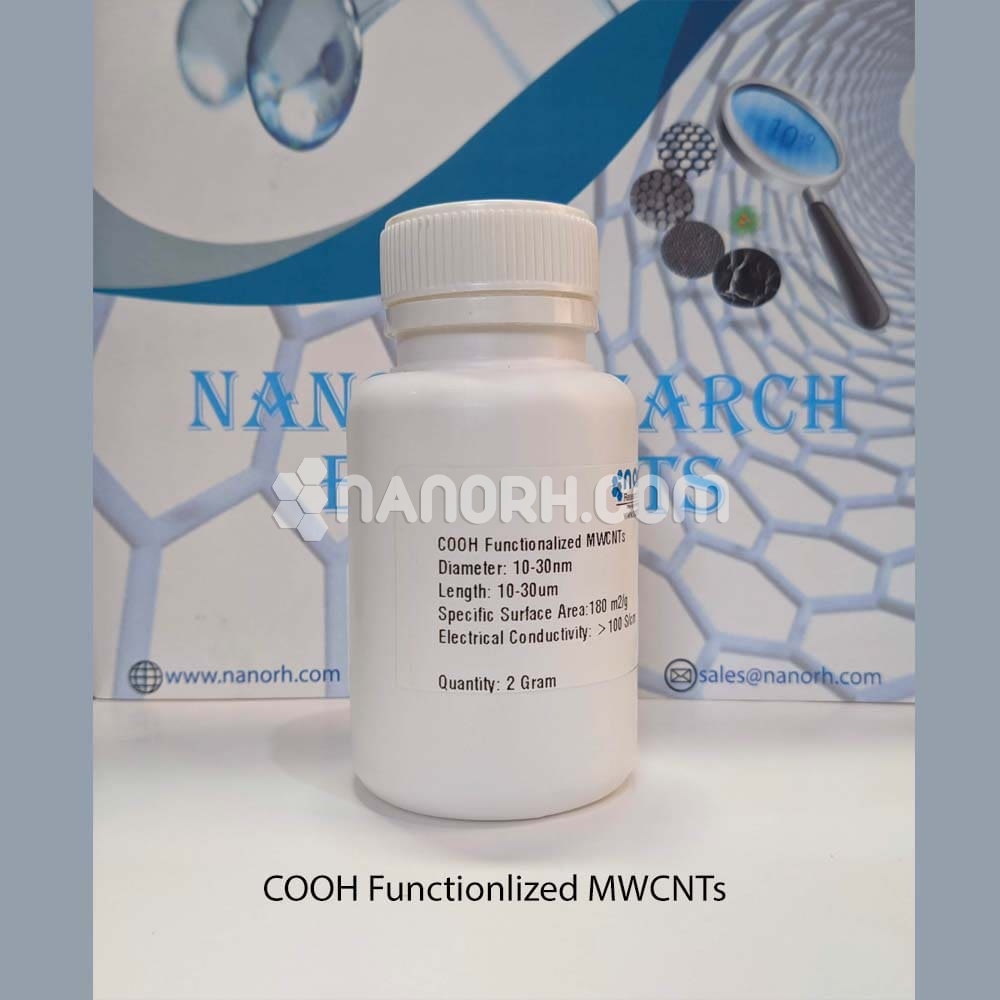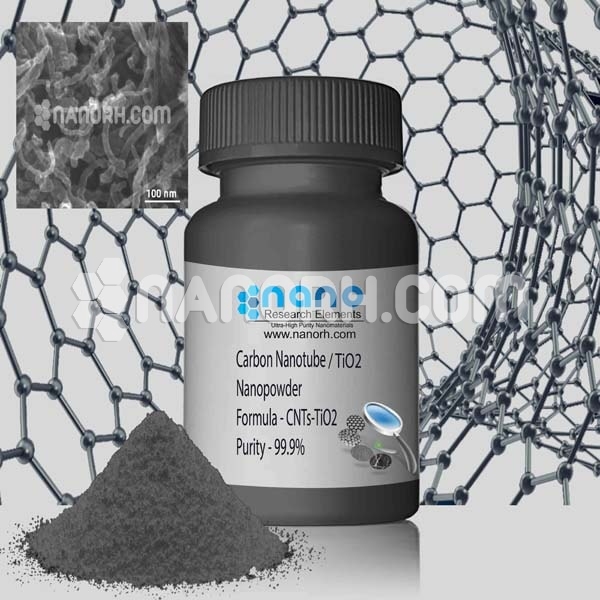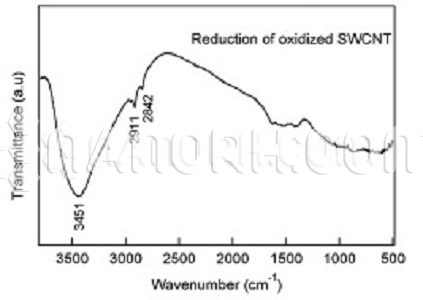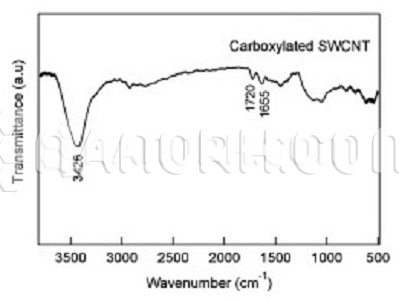| COOH Functionalized MWCNTs | |
| Product No | NRE-34006 |
| CAS No | NA |
| Formula | NA |
| Tap Density | 0.28g/cm3 |
| True Density | 2.1g/cm3 |
| Average Length | 20-30 um |
| Purity | Carbon nanotubes > 95wt% |
| Specific Surface Area | >110m2/g(BET) |
COOH Functionalized MWCNTs
Potential applications of carbon nanotubes are:
Introduction
COOH-functionalized Multi-Walled Carbon Nanotubes (MWCNTs) refer to carbon nanotubes (CNTs) that have been chemically modified by introducing carboxyl groups (-COOH) on their surfaces. This functionalization process typically involves oxidation, which attaches carboxyl groups to the sidewalls or ends of the nanotubes, making them more hydrophilic and reactive. The process usually uses chemicals such as nitric acid (HNO₃) or a combination of acids and oxidizing agents.
Applications
The unique properties of COOH-functionalized MWCNTs open up many possibilities across diverse industries, particularly in fields that require strong materials, conductive properties, and bio-interactions. Here are some notable applications:
Biomedical Applications
Drug Delivery: COOH-functionalized MWCNTs are used as carriers for targeted drug delivery. The carboxyl groups on the surface facilitate the attachment of drugs or therapeutic agents, which can then be targeted to specific cells or tissues, reducing side effects and improving treatment efficiency.
Cancer Treatment: These functionalized MWCNTs are being studied for cancer therapy. The carboxyl groups allow the attachment of anticancer drugs or other therapeutic agents, enabling controlled release at tumor sites.
Biosensors: COOH-functionalized MWCNTs are used in biosensors for the detection of biomolecules (e.g., glucose, DNA, proteins). The surface chemistry allows for the attachment of biological recognition elements (e.g., antibodies, enzymes) to the nanotubes, improving the sensitivity and specificity of biosensors.
Tissue Engineering: The hydrophilic surface created by the carboxyl groups improves the biocompatibility of MWCNTs, making them suitable for use in tissue scaffolds for regenerative medicine, including skin, bone, and nerve tissue engineering.
Environmental Applications
Water Purification: COOH-functionalized MWCNTs are employed in water filtration systems to remove heavy metals, organic pollutants, and bacteria from water. The carboxyl groups increase the adsorption capacity and improve the interaction between the nanotubes and contaminants, facilitating effective filtration.
Oil Spill Cleanup: The carboxyl groups enhance the ability of MWCNTs to adsorb oils and hydrophobic substances, making them useful in environmental cleanup applications, such as oil spill recovery and removal of hydrophobic pollutants from water bodies.




